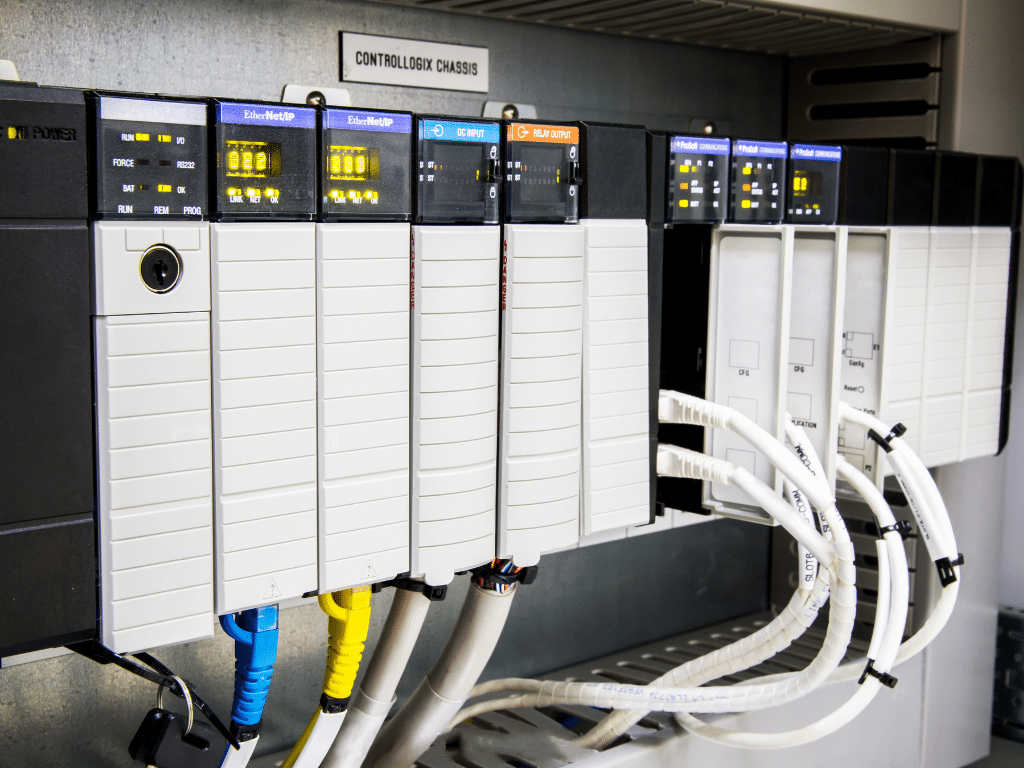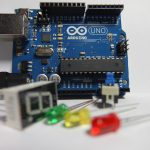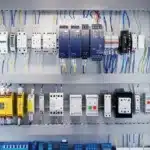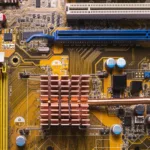
Introduction
Cybersecure Programmable Logic Controllers (PLCs) equipped with safety features have become paramount in various industrial automation processes. These computer-based electronic devices are used extensively in industrial environments to protect and control processes and machinery. Traditional PLCs focus on automating tasks, but with the advent of smart industries, there is a growing need for these controllers to be both cybersecure and inherently safe. Our comprehensive article presents the significance of these advanced Cybersecure PLCs, exploring their role in safeguarding critical infrastructure and ensuring operational continuity.
Comparing Standard PLCs with Cybersecure PLCs
Standard PLCs are integral components in controlling machinery and processes in real time with robust reliability and precision. However, these controllers often lack advanced security features, making them vulnerable to cyber threats. This vulnerability is due to the fact that cybersecurity threats were not as prevalent or sophisticated as they are today.
Cybersecure PLCs, on the other hand, are innovative components that provide a rapid response to the growing threat of cyberattacks on industrial systems. These PLCs incorporate advanced security features and are designed with the understanding that industrial control systems are now prime targets for cybercriminals, and protecting these systems is critical to maintaining operational integrity, safety, and confidentiality.
Introduction to Cybersecure PLCs with Safety Integration
PLCs are the backbone of modern industrial control systems, automating processes across various sectors. However, as these systems become increasingly interconnected and accessible via the internet, they also become vulnerable to cyber threats. Cybersecure PLCs with integrated safety features are specifically tailored to address these vulnerabilities, offering robust protection against both cyberattacks and operational hazards. PLCs with integrated features can withstand unauthorised access, tampering, and cyber threats, ensuring that industrial processes remain secure and reliable.
The Significance/Need of Cybersecurity in PLCs
Cybersecurity in PLCs is no longer optional but a necessity. Cyber-attacks on industrial systems can lead to significant disruptions, including downtime, loss of data, and even physical damage to equipment. By integrating cybersecurity features directly into PLCs, manufacturers can provide a foundational layer of protection that safeguards the integrity, availability, and confidentiality of the control system. With the integration of safety functions, PLCs can now execute safety-related tasks, such as emergency stops, safety door monitoring, and speed control, alongside their standard control tasks.
Key Cybersecurity Features in PLCs
PLCs are integrated with advanced features to detect and mitigate various hazards in real-time. Some of these features include:
- Authentication and Authorisation: Ensures that only authorized personnel can access and modify the PLC’s operations.
- Data Encryption: Protects the confidentiality and integrity of data as it is transmitted and stored.
- Regular Updates and Patches: Keeps the PLC’s software protected against known vulnerabilities.
Integrating Safety Features into PLCs
Safety-integrated PLCs go beyond traditional safety measures by embedding safety functions directly into the control system. This integration facilitates a seamless response to potential hazards, minimising risks to both machinery and personnel. Some of the potential benefits of safety integration in PLCs include:
- Reduced System Complexity: Combining standard and safety control in a single PLC simplifies the architecture and reduces hardware requirements.
- Enhanced Flexibility: Integrated safety features allow for a more flexible system design and easier modifications to meet changing safety requirements.
- Improved Diagnostics: Advanced diagnostics capabilities enable quicker identification and resolution of safety-related issues, reducing downtime.
The Perfect Synergy of Cybersecurity and Safety in PLCs
The convergence of cybersecurity and safety in PLCs represents a holistic approach to protecting industrial control systems, automation, and risk management. This synergy ensures that systems are not only resilient to cyber threats but also equipped to handle operational anomalies that could lead to unsafe conditions. Additionally, this dual mandate can significantly address the physical and digital integrity of multiple industrial control systems, making them indispensable for professionals and in settings where safety and security are a concern.
Implementing Cybersecure and Safety-Integrated PLCs
Adopting PLCs with both cybersecurity and integrated safety features requires a strategic approach, including:
- Risk Assessment: Identifying potential cyber and safety risks specific to the industrial environment.
- Vendor Selection: Choosing PLCs that offer robust cybersecurity and safety features, backed by a strong track record.
- Ongoing Training: Ensuring that staff are trained on the latest cybersecurity practices and safety protocols.
The Impact of Cybersecure PLCs on Industrial Operations
The adoption of cybersecure PLCs with integrated safety features has a profound impact on industrial operations. Several industries have already embraced the deployment of cybersecure PLCs with integrated safety features to enhance operational resilience and safety. In the automotive sector, for instance, manufacturers leverage safety-integrated PLCs equipped with advanced collision detection algorithms and fail-safe mechanisms to ensure the safe operation of robotic assembly lines. Similarly, in the oil and gas industry, cybersecure PLCs with encrypted communication protocols and redundant control channels are deployed to safeguard critical infrastructure against cyber threats and process-related hazards.
Cybersecure and Safe PLCs: Challenges and Considerations
While the benefits are clear, integrating cybersecurity and safety features into PLCs also presents challenges. Some of these challenges include the need for ongoing maintenance and updates, managing the complexity of integrated systems, and ensuring compatibility with existing infrastructure.
Takeaway
Cybersecure PLCs with integrated safety features are critical in today’s industrial landscape. By providing a unified solution that addresses both cybersecurity threats and operational safety concerns, these advanced PLCs are essential for protecting critical infrastructure and ensuring the reliability of industrial processes. As the industrial sectors further evolve, the importance of this synergy in PLCs will grow, making it a key focus for manufacturers, engineers, and cybersecurity professionals.





















